|
AI-Enabled Personalized Engineering Education |
||
With the rapid advancement of artificial intelligence techniques, such as large language models, traditional classroom teaching can be enhanced through personalized, real-time online educational platforms. To this end, we have developed and actively maintain an AI-enabled tutor for college engineering students.Powered by large language models and grounded in a domain-specific database, the tutor adapts to each student’s needs and helps students become confident, independent problem-solvers. It guides them through the problem-solving process, assesses their work, provides constructive feedback, and clarifies misconceptions, while fostering metacognitive skills similar to those nurtured by human instructors. Actionable insights from student–tutor interactions are shared with course instructors, enabling them to promptly identify knowledge gaps and adapt instructional materials for more engaging and effective teaching. We are also integrating discipline-specific professional tools to boost the tutor’s reliability and flexibility, while enhancing its ability to recognize and interpret engineering diagrams. In summary, the AI tutor delivers personalized learning support for engineering students while equipping instructors with actionable insights to monitor progress and strengthen in-person teaching in a timely and targeted manner.
|
||
|
 |
|
|
Personalized Thermal Comfort Modeling and Human-In-The-Loop Energy-Efficient Building HVAC Control |
||
The energy consumption of building systems is responsible for almost 40% of the total energy use in the United States, while the occupants’ comfort is not necessarily guaranteed due to the personalized preferences among different individuals. The objective of this research is to design human-in-the-loop (HITL) energy-efficient controllers for HVAC and lighting systems that can achieve personalized thermal/visual comfort for different occupants. Since the thermal dynamics models of building systems and the thermal comfort model of occupants are complex and highly nonlinear, we used various machine learning methods, such as reinforcement learning, to develop data-driven models and controllers for HVAC systems. The occupants are provided channels to give the system their feedback, which can be further used to adapt the controllers to achieve HITL control. In order to maximumly leverage the collected personalized feedback and reduce the number of required votes, we used meta-learning algorithms to develop thermal and visual comfort models that can adapt to different occupants quickly. In addition, we are designing recommendation systems via online learning methods so that the occupants can receive energy-efficient recommendations and select to accept or override them based on their needs. Considering the limited number of online interaction data, the recommendation systems are pre-trained first with the personalized preference models that were trained with offline data and then fine-tuned with a few online personalized feedback votes.
|
||
|
 |
|
|
Adaptive Power Management for Supercapacitor-Operated Sustainable Wireless Sensor Networks
|
||
The long-term objective of this research is to develop maintainance-free self-powered WSNs that can exist for decades on weak ambient energy and provide sustainable services required by many important long-life applications. The lifetime of self-powered WSNs has been severely limited by the cycle life and a short life span of rechargeable batteries, the current popular storage device for energy harvesting wireless sensors. Alternatively, supercapacitors (SCs) have cycle lives on the order of millions and a life span of 20 years or more, and can significantly extend the lifetime of self-powered WSNs if being successfully used as storage devices for self-powered WSNs. To enable a paradigm shift from a battery-based to a SC-based design, this research program is investigating how SC device characteristics affect power management polices, and establishing the theoretical foundation and applied framework of adaptive power management for sustainable SC-powered WSNs.
|
||
|
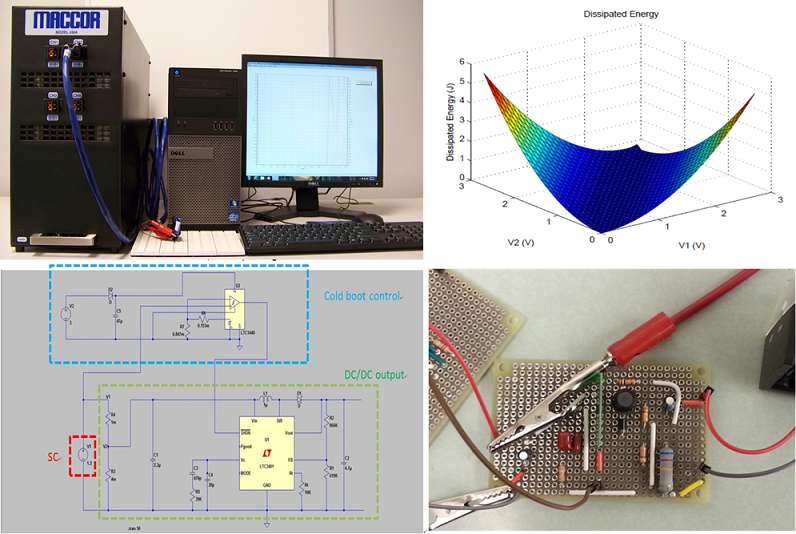 |
|
Non-Contact Vital Sign Detection and Monitoring Systems
|
||
|
The vital sign detection approach based on microwave Doppler radar has the capability of measuring vital sign signals, such as heartbeats and respirations, without the implementation of the electrodes, reducing the spiritual interference to the patient, and improving the detection accuracy and convenience. To develop a high-performance, non-contact vital sign detection system, we are designing methods to suppress noise and interferences from both hardware and software aspects, and investigating signal processing algorithms for extracting heart waveforms and determining relevant parameters that may reflect health conditions.
|
|
|
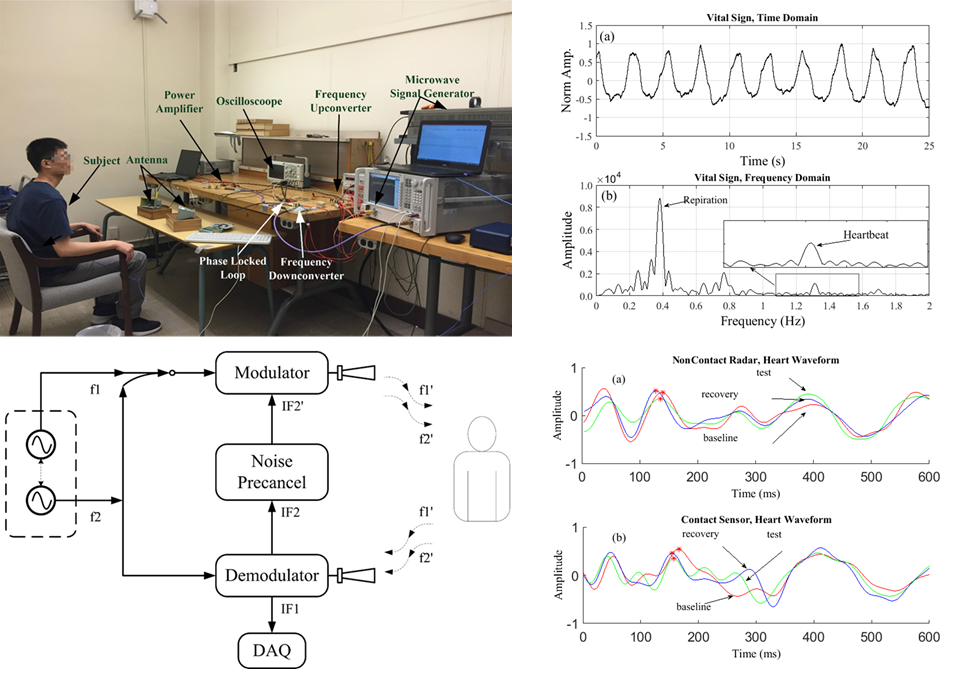 |
|
Temperature-Aware Adaptive Power Management for Bio-Implants
|
||
With the increase of functionality and complexities of implantable medical devices, the temperature rise in the tissue around the implants has become a new challenge due to the detrimental effects of exposing tissue to a temperature a few degree Celsius above the normal body temperature. For example, it is reported that a temperature increase greater than 1 degree Celsius could damage the brain tissue. In this project, we investigate achieving safe operating temperature and optimal device operation via regulating the working status of the components that are responsible for dissipating heat. To support the investigation, we first focus on the thermal effect of neural prosthesis, which are implantable devices that interact with the central nervous system or the peripheral nervous system and help to restore motor, sensory, or cognitive functionality that may have been damaged as a result of an injury or disease.
|
||
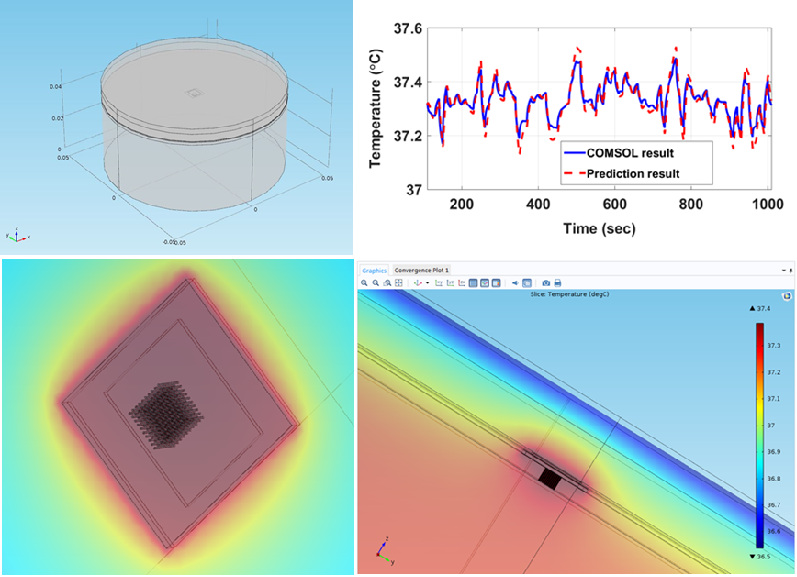 |
||
Power Management for Internet of Battery-less Things |
||
With the proliferation of Internet of Things (IoT) and IoT-supported services, how to power such a gigantic number of IoT systems in a cost-efficient and environment-friendly way becomes a bottleneck problem. Empowered by energy harvesting technologies and extremely long cycle life the energy storage device Supercapacitors (SC), Internet of Battery-less Things (IoBT) is a promising solution with prolonged lifetime and self-sustainable operation. In this research, we attempt to approach the power management challenge of IoBT from both the node level and network level to create a power management framework for maintaining energy efficient operation of IoBT and achieving high performance of collaborative IoBT networks.
|
||
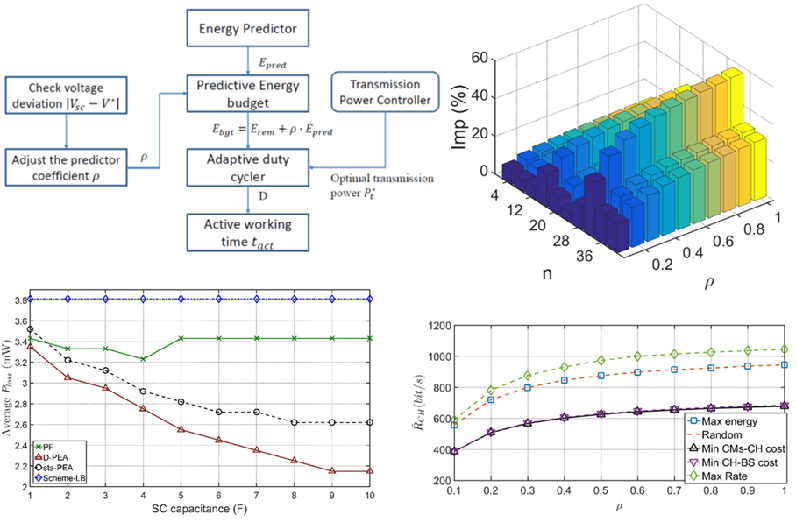 |
||
Multisensor Data Fusion and Information Extraction for Structural Health Monitoring and NDE of Infrastructure Systems |
||
To enhance safety, operational efficiency, and sustainability of massive networks of infrastructure systems, such as transportation networks, waterway networks, pipelines, and electrical grids, intelligent sensing and information extraction system is critically needed to provide accurate and reliable information in supporting system condition assessment and management decisionmaking. Multi-mode sensing and evaluation systems that combine sensor arrays and different sensing and testing technologies have been pursued and adopted by many researchers and application engineers. To benefit from the integraded sensing systems, a multisensor data fusion and information extraction approach is being developed to process, interpret and integrate the data in a way that offsets the relative limitations of each individual technology and improves the accuracy and reliability of deterioration identification and characterization for infrastructures.
|
||
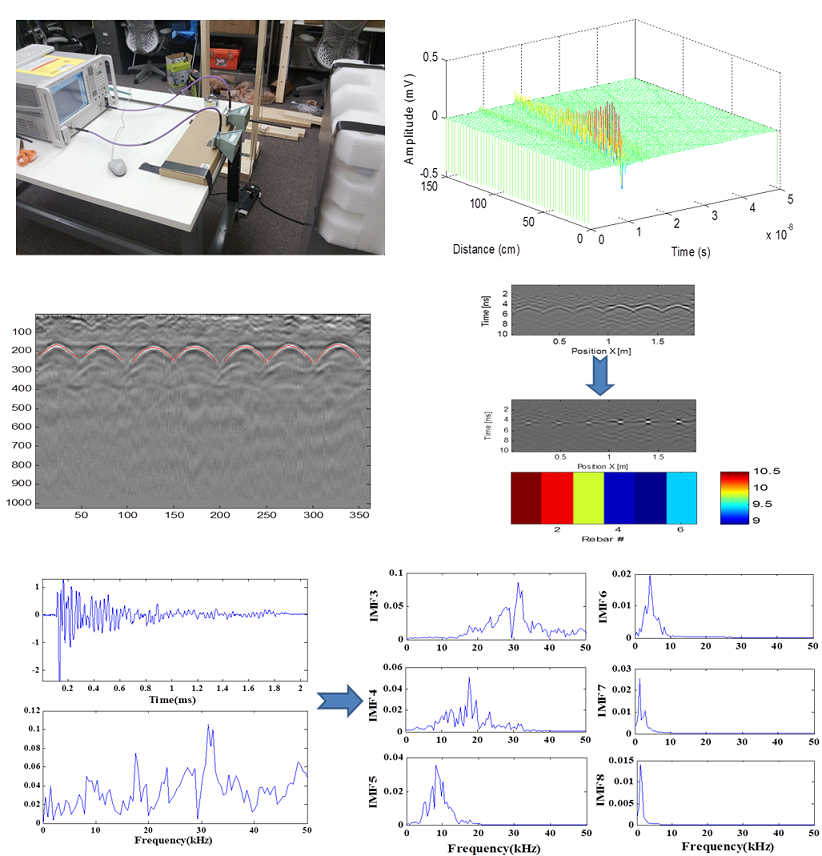 |
||
Environmental Monitoring and Modeling Using Wireless Monitoring Systems |
||
Phytoplankton are essential contributors to estuarine production, whose population and community dynamics are influenced by many abiotic factors. The ability to model changes in estuarine phytoplankton biomass and community composition is essential to our understanding of estuarine ecosystems, but the interactions among multiple abiotic factors make this goal very difficult to accomplish. This research uses a real-time wireless monitoring system and manual methods to collect abiotic and biotic parameters, including physical and chemical water characteristics and phytoplankton biomass and species composition in a Georgia estuary, during both bloom and non-bloom seasons, and establishes ecological models for phytoplankton dynamics analysis.
|
||
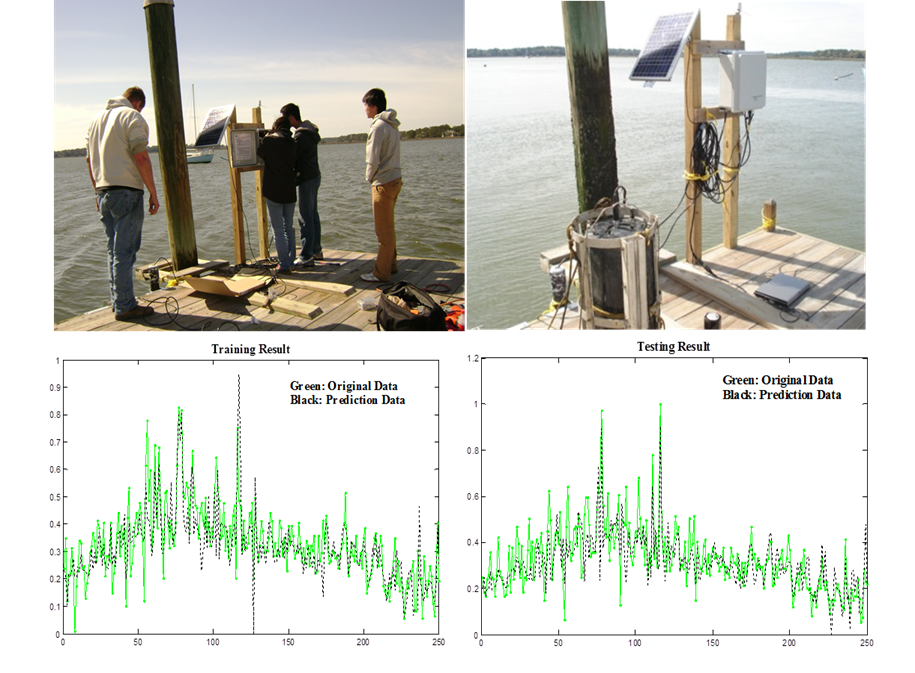 |
||
Design Synthesis and Automation of Microelectromechanical Systems |
||
MEMS (Microelectromechanical Systems) is a rapidly expanding field that exploits batch-fabrication technologies of the traditional integrated circuit (IC) industry to produce highly miniaturized electromechanical systems. However, MEMS computer aided design (CAD) tools, especially optimal design synthesis tools, lag far behind IC CAD tools. The goal of this research is to develop a hierarchical MEMS synthesis and automation framework based on hybrid evolutionary computation. The synthesis framework integrates a design component library with a MEMS simulation tool and a hybrid evolutionary computation algorithm that includes two levels of optimization: a stochastic global search method using a multi-objective genetic algorithm (MOGA) and a gradient-based local optimization technique. It also allows human interaction at specific stages of the evolutionary synthesis process.
|
||
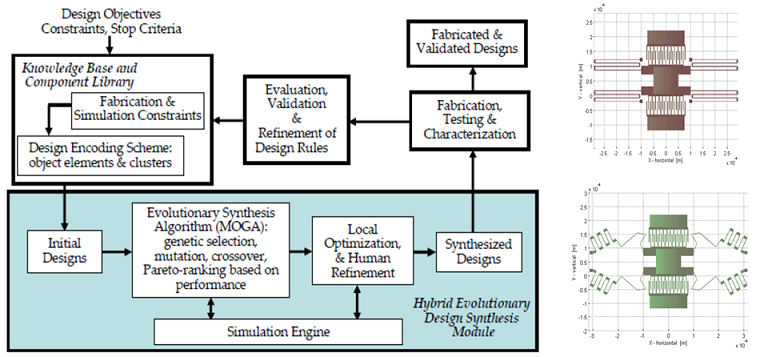 |
||
Contact Dr. Ying Zhang for comments and questions about this website. © 2018, Sensors and Intelligent Systems Laboratory, School of Electrical and Computer Engineering at the Georgia Institute of Technology. LEGAL & PRIVACY INFORMATION - GEORGIA INSTITUTE OF TECHNOLOGY |
|
